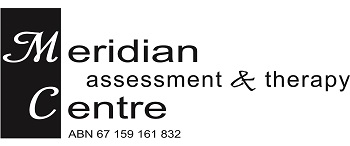PTSD Treatment in Sydney
Posttraumatic Stress Disorder (PTSD)
PTSD is a mental health condition that can develop following experiencing or witnessing a traumatic event or in some cases, multiple events involving potential or actual death or serious harm. It can also be caused by hearing about such an event happening to someone close to you or indirect exposure to aversive details of trauma to someone else, usually in the course of professional duties (e.g., first responders, crime investigators, medics, etc.)
This prerequisite for PTSD diagnosis is classified as Criterion A
PTSD is characterised in addition, by the development of 4 kinds of symptoms, which have persisted for at least four weeks following exposure to the traumatic event/s.
The 4 dimensions of symptoms involve
Re-experiencing the trauma, avoidance, negative thoughts and mood, and markedly increased physiological arousal
Criterion B
- Re-experiencing the trauma
Such symptoms are a kind of a ‘re-living’ of the trauma, making it feel ever present and fresh.
The re-experiencing can involve
- Intrusive memories of the event/s that are difficult to control and can interrupt or negatively affect functioning in everyday life.
- Flashbacks e.g. feeling as if transported back to the event and losing ‘connection’ to the here and now
- Nightmares
- Extreme distress on exposure to reminders of the trauma
- Having very strong physical symptoms such as a racing heart, breathlessness, chest pain, sweating or even panic attacks when reminded of the trauma
Criterion C
- Avoidance
Avoidance symptoms usually develop in an attempt to prevent memories, perceptions, feelings, emotions etc. associated with the trauma from being experienced:
Symptoms of avoidance include
- Avoiding people, places, activities or objects which are reminders of or symbolise some aspect of the traumatic event
- Attempts to avoid conversations, thoughts, sensations, emotions and or feelings that may be in some way associated with the trauma
Criterion D
- Negative thoughts and Mood
These symptoms can involve:
- Bblaming yourself or others
- Feeling depressed, angry, guilty or numb and detached
- Having gaps in your memory for important aspects of the traumatic event
- Losing your ability to enjoy or take pleasure in the things you used to
- Becoming emotionally detached or extremely distrustful of others
- Markedly increased physiological arousal
- Severe hypervigilance, for example, constantly scanning the environment for potential threat and feeling unsafe in normal environments
- Being ‘jumpy’, easily startled
- Becoming very intolerant, irritable and easily angered
- Sleep disturbances e.g. difficulty falling and staying asleep, not being able to sleep at night and sleeping during the day, waking up after distressing nightmares and feeling too anxious to return to sleep
- Difficulty focusing and concentrating
Not all of the symptoms listed above need to be present for a diagnosis of PTSD. Criterion A must be met in addition to one symptom from criterion B, one from criterion C and 2 from criterion D, the more symptoms that are met, often the higher severity of the experience of PTSD and its impact on a person’s daily function.
PTSD can have far reaching impacts. Some suffers can develop other psychological disorders which ultimately adopt a ‘life of their own’ and treatment of these disorders will also be necessary. Anxiety and mood disorders can often arise in the context of chronic PTSD. Substance or alcohol abuse and dependence disorders can develop when people ‘self-medicate’ to manage their pain.
Treatment of PTSD is multifaceted. The complexity and severity of traumatisation needs to be taken into consideration when formulating an effective treatment approach. Treatment focuses on helping you feel safe again, process the trauma, and regain a sense of control. With more complex and severe trauma, stabilisation and support will be the first goal of any intervention. Ultimately dealing with or processing difficult memories, emotions, feelings and narratives relating to the trauma is an integral part of therapy to support recovery. There are a number of treatment interventions which have been developed to support achieving this. Evidence based approaches include Cognitive Processing Therapy and Eye Movement and Desensitisation and Reprocessing therapy.
In short, PTSD can make it feel like the past is always present- but healing is possible and you don’t have to do it alone.

